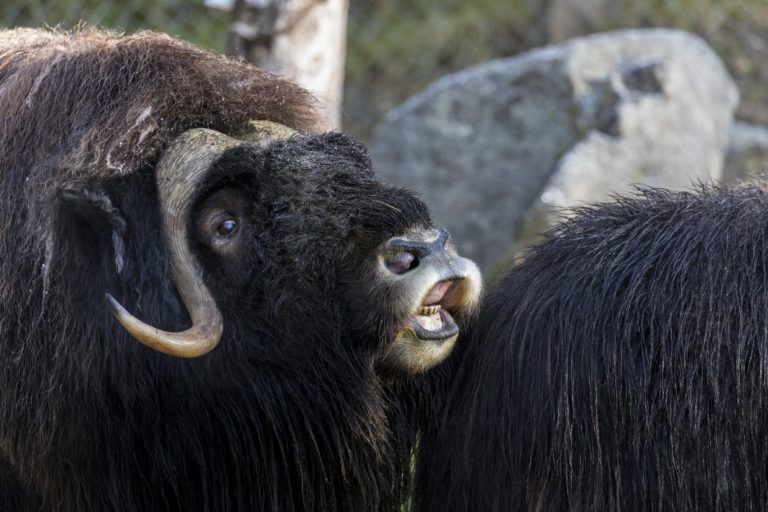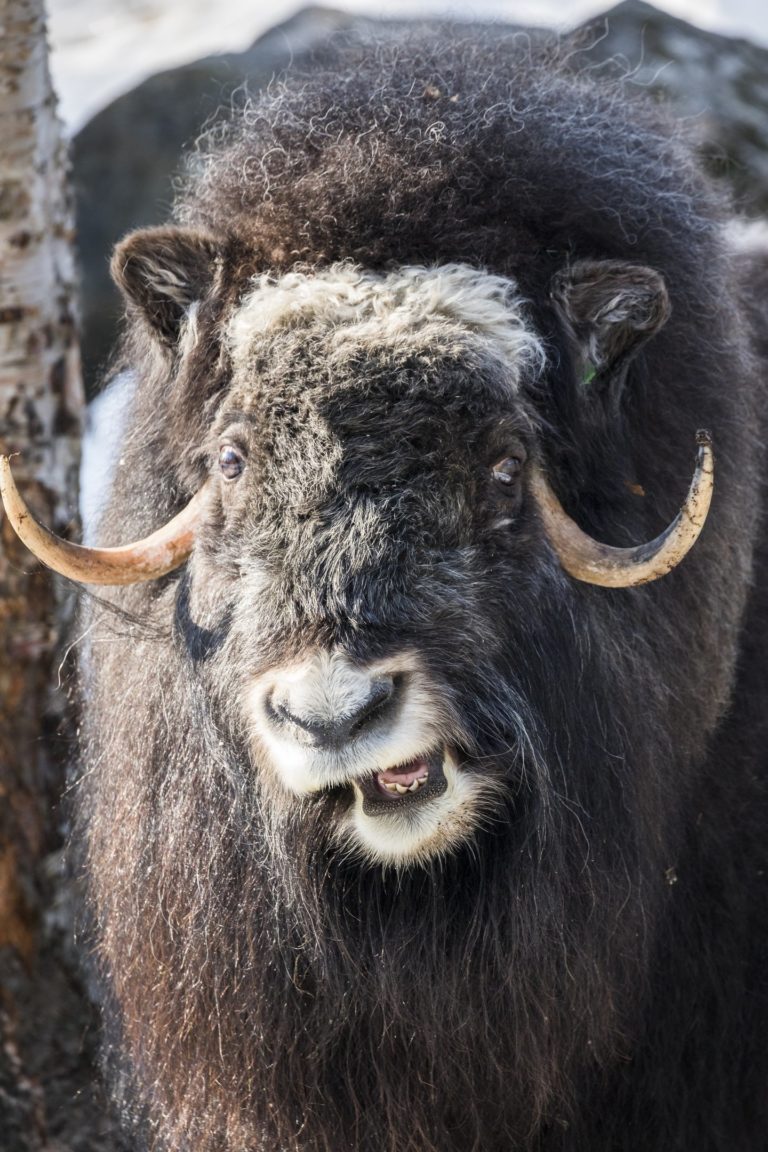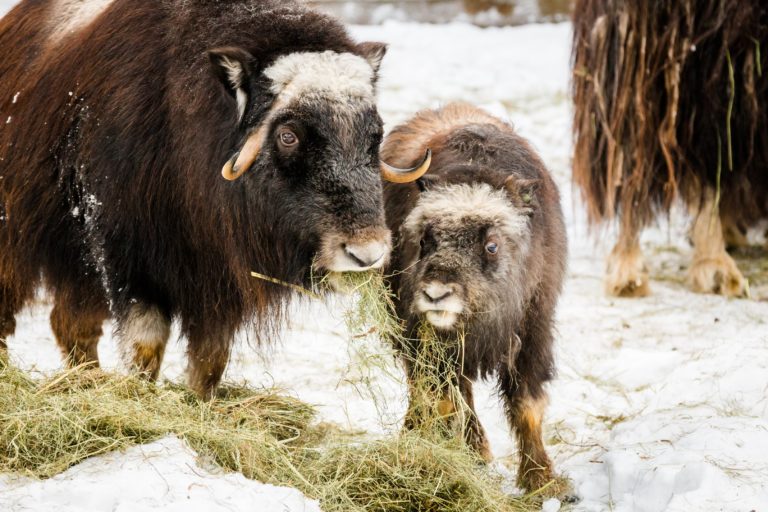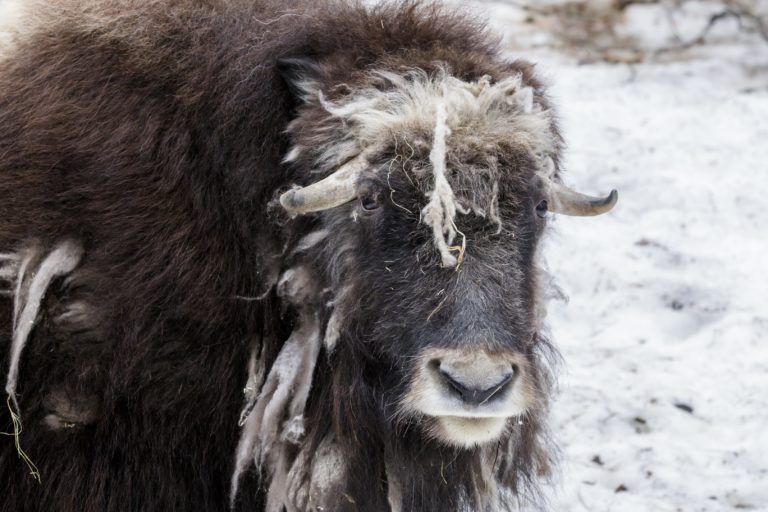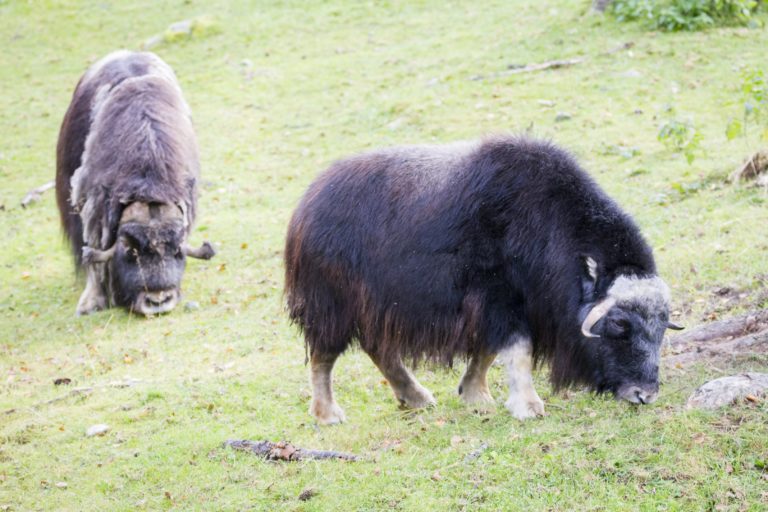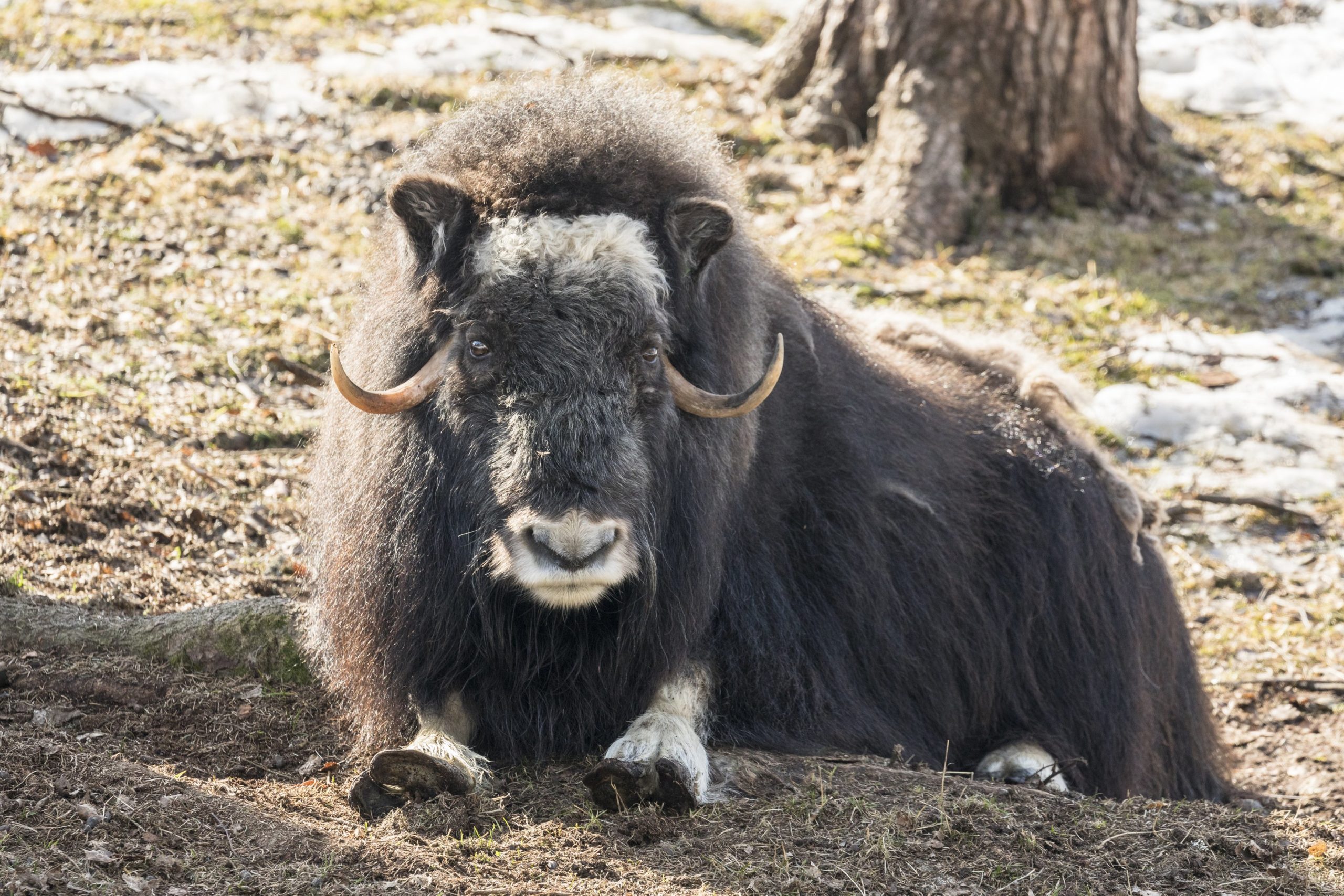
Musk ox
LIVING HABITS
Muskoxen live in mountain uplands usually in herds of 10 – 20 individuals, both male and female. During mating season, the dominant male drives the competing males out of the herd. In the spring and summer, muskoxen graze in the lush lower country, for example in the willow thickets along a stream, feeding on sedge, willows and grass. For the winter they move up to open mountain tops, where the wind keeps the snow off the scant vegetation. In the winter the muskoxen feed on woody plants and old grass from the summer before. The muskoxen can be found in the northern parts of Canada and Greenland. They have been introduced to Norway, Sweden, Alaska and Russia.
PROTECTION
The muskoxen lived in Scandinavia before the last ice-age, at which time the species disappeared from all over else except Canada and Greenland. The next threat for the muskoxen was caused by humans, as the species was hunted to extinction in the end of the 1800’s, especially in Alaska. A great part of the muskoxen found nowadays have been newly introduced to their areas. Like many other animals, also the muskoxen are threatened by global warming: the change in vegetation and additional changes in snow conditions make it more difficult for muskoxen to find nutrition. The muskoxen at Ranua Wildlife Park are part of the European Endangered Animals Protection Programme (EEP).
ADAPTING TO WINTER
The muskoxen don’t feel cold in the harshest of winters. The short woolly under-fur of the muskoxen is said to be the warmest natural fibre; even 8 times warmer than lamb’s wool. The long and coarse over-fur keeps the wind away from the skin of the muskoxen. Their ears, tail and legs of the muskoxen are short, minimizing the surface emitting warmth. The nutrition in the winter is woody and scarce; therefore the muskoxen eat plenty during the summer, storing reserve nutrition under the skin. Their movements are slow and thoughtful, and they do not waste energy.
Musk ox
Ovibos moschatus
Class: Mammalia – Mammals
Order: Artiodactyla – Cloven-Hoofed Animals
Family: Bovidae – Hollow-Horned Animals
Size: Weight: males 260–400kg, females 170–300kg; stands 91–152cm at the withers.
Breeding: Heat: August-September, gestation period 250 days and nights (8,5 months), offspring 1 (-2) at a time. Independent in 1 year, females reach sexual maturity in 2 years, males often first in 5 years.
Lifespan: 20–30 years.

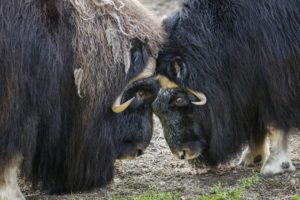
Did you know…
Did you know, that when threatened by predators the muskoxen do not run away? The adult individuals get together, and form a wall to protect the weaker and younger ones. The antlers of the muskoxen are a good weapon against natural predators, but for the gun of a man they are of no use.





